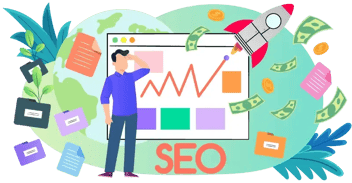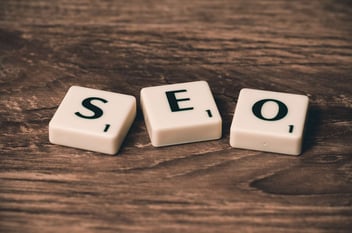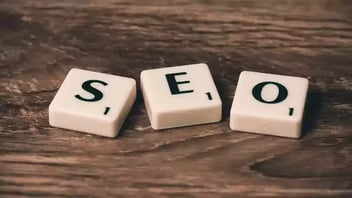The simple landing page is often maligned yet seemingly never truly understood. There are technically as many landing pages as there are reasons for their use. To clarify some of the mystery surrounding these powerful marketing tools, here's a round-up of the top 9 varieties we see today, prioritized from most to least common.


When it comes to digital marketing, landing pages serve as the nucleus of your website's content. On one page holds a plethora of keywords, links, and information, designed to boost your website's SEO and educate visitors. That said, when creating a landing page, it's important to consider your options and choose the format that best fits your needs.
1) The Squeeze Page
A somewhat archaic term, the squeeze page is what most of you pictured when you read the headline of this article. This is a general-use landing page where the reader is asked for a piece of information (generally an email address) in exchange for a piece of exclusive content (often an ebook or whitepaper).
The name "squeeze page" stems from the sense that the page visitor is being squeezed for information. Hence why we think the name is outdated. Currently, these pages are often called "gated content download" pages or "contact form" pages, as the bottom line is for the company to collect contact information in exchange for a piece of content.
2) The Click-Through Page
A landing page that doesn't ask for any information whatsoever. Generally used in social media campaigns, a click-through page will offer further information on the topic that drew the user to click in the first place. They will then see a CTA to drive them further into the sales funnel.
For example, click-through pages are great for expanding on the information provided in a Facebook post. Once the reader clicks the post and is brought to your domain, this page entices them to want to dive even deeper into the subject by directing them to a download page, sales page, or contact us page (see below) to continue their journey.
3) Lead Capture Page
Similar to a squeeze page but beefed up. Lead capture pages are used similarly to squeeze pages with a twist. These pages will ask for more information from the visitor and, in exchange, will offer a deeper dive into the content. Instead of a simple email address for an ebook transfer, a lead capture page may request 8-12 fields worth of contact information in exchange for a one-on-one consultation or demonstration.
These are designed further down the sales funnel when the visitor has moved beyond Awareness and is between Consideration and Purchase. The key to the successful use of lead capture pages is knowing how much to ask for and how much to offer. Don't ask for more than a name and email for an ebook. Whitepapers can command a bit more, say 4-8 fields (name, email, company name, role at the company, etc.). And demos or video calls can command a full bio of 8-12 fields, including things like the proposed budget and who has purchase power.
4) Unsubscribe Page
Nobody likes talking about them, but they're critical. Having an easy-to-find "unsubscribe" link in all your email communications can increase your open rate as people know how easy it will be to leave the list if they decide to. And having that link go to a clean, unobtrusive unsubscribe page with minimal navigation to other parts of the site will show them that while you respect their decision to leave your list, you would also appreciate it if they would stick around and read other content.

5) Sales Page
Also called "long-form content landing pages" or "long-form landing pages," these are where your copywriting skills will be tested. These pages are content-rich without being walls of text. They're designed to cleanly move a potential customer from the Consideration stage into the purchase stage. As such, the CTAs will have changed from "download now" to "Buy Now" or "purchase here." These are bottom-of-the-funnel-only pages, so they need to contain your most persuasive copy.
6) 404 Error Page
Yes, technically, these are landing pages. They're landing pages that acknowledge the simple fact that stuff happens. Whether a page got moved and the link needs to be updated, or the visitor mistyped/truncated a URL, these pages need to contain specific information to keep that visitor from disinterested. Stay in brand voice while acknowledging that something went sideways, then offer links to other relevant pages and reassure your audience that the problem will be addressed.
7) Coming Soon Page
No rule says companies that haven't officially launched can't have awesome websites. To link to these sites from social media and emails requires the creation of a “coming soon” page. Again, the key is to stay in a brand voice so visitors can start to get used to your style while you get to let everyone know that your awesome widget drops soon. Offer your value proposition and a CTA for early access or another equally exclusive offer to entice visitors to convert on the spot. Remember, exclusivity sells.
8)About Us Page
More than just your regular site page of the same name, these landing pages are fantastic for general brand awareness campaigns and social media posts that aren't tied to a specific product or service. These pages give you someplace in-domain to send people to where they can start learning more about your company and products and can include CTAs for email subscriptions, ebooks, or "more information."
9) Pillar Pages/Content Clusters
These are a bonus since they serve more than just landing page duty. The pillar page is a content-rich page offering a deeper dive into a subject you've written about on the blog or have been posting about on social media. It's a page to link back to from these posts and provides a convenient page to link to from each post. They can also include multiple CTAs for ebooks, whitepapers, video lessons, and more. A pillar page is a core element of a successful Inbound Marketing strategy.
This creates what Google calls "Topic Clusters" or "Content Clusters," which increases your site's authority with the search engine. So a pillar page can serve double duty as an SEO gold mine. Google's algorithm gives a fair bit of pull to sites deemed authoritative, so creating a topic cluster around your niche or industry can create a lot of organic pull for your site.













Leave a Comment